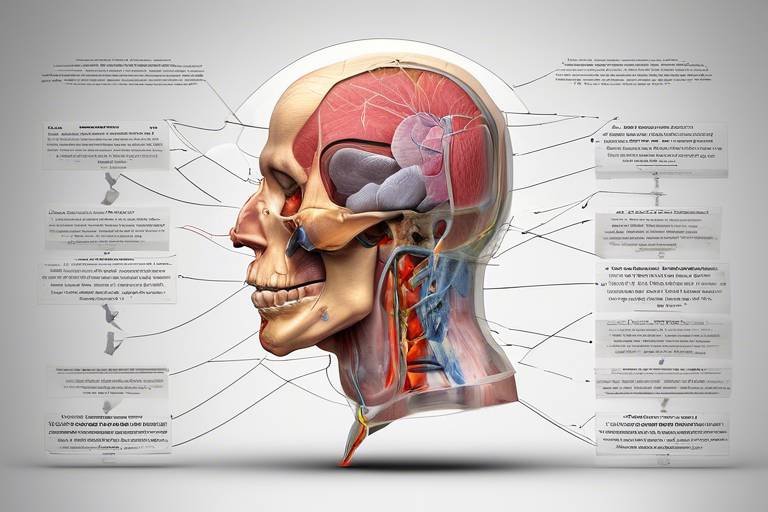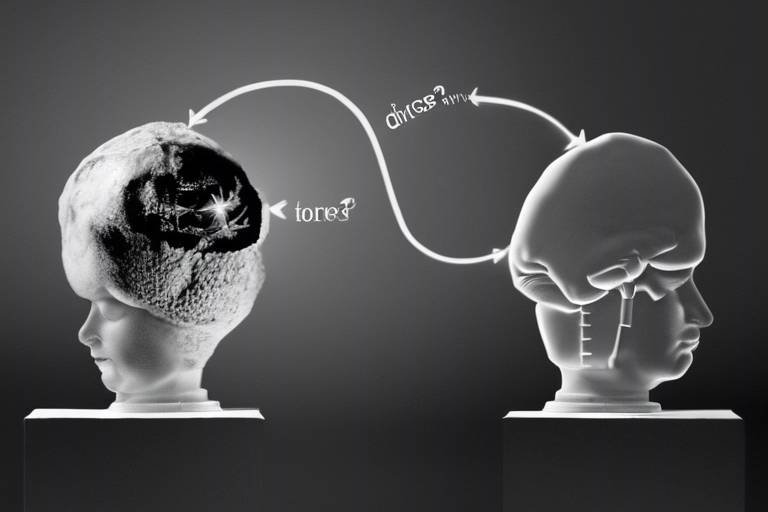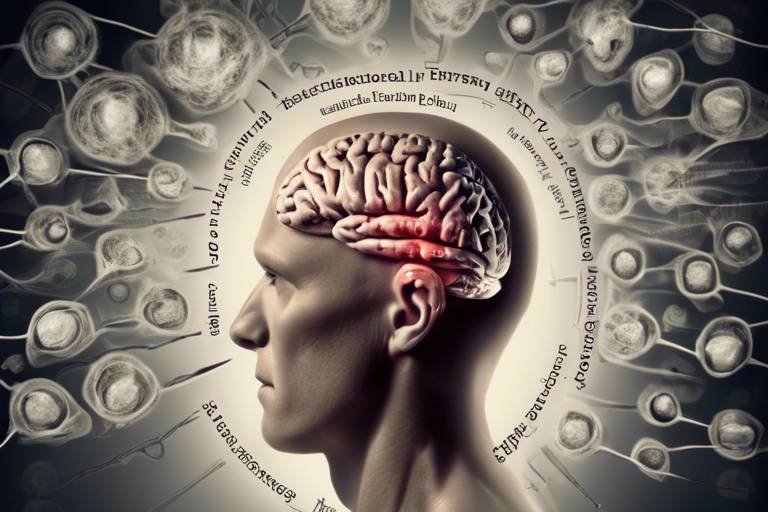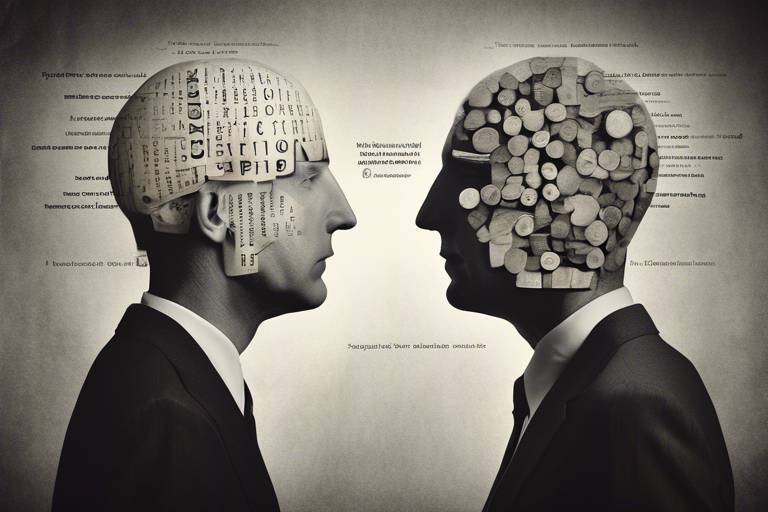On Truth and Reality: Shaping Opinions and Facts
Welcome to a world where the lines between truth and reality often blur, creating a complex tapestry of opinions and beliefs. In our daily lives, we are bombarded with information from countless sources, each vying for our attention and acceptance. But how do we discern what is real and what is merely a construct of our perceptions? This article delves into the intricate relationship between truth and reality, exploring how our perceptions shape our opinions and influence our understanding of facts in society.
Understanding what constitutes truth is fundamental to navigating our world. Philosophers have debated the nature of truth for centuries, presenting various perspectives and definitions. At its core, truth can be seen as a reflection of reality, but it is also shaped by individual experiences and societal contexts. For instance, what one person perceives as true may differ significantly from another's viewpoint, highlighting the complexities and nuances that surround the concept of truth. In this section, we will explore different philosophical perspectives, from the correspondence theory, which suggests that truth corresponds to facts, to the coherence theory, which posits that truth is based on the coherence of a set of beliefs.
Perception significantly impacts how individuals interpret reality. Our senses, experiences, and even emotions play a critical role in shaping our perceptions, leading to varying opinions on what is considered true. For example, two people witnessing the same event might recount entirely different stories based on their perspectives. This phenomenon raises an important question: how reliable are our perceptions? Psychological factors, such as cognitive biases, further complicate our understanding of truth. These biases can distort our perceptions and lead us to form opinions that may not align with objective reality.
Cognitive biases are systematic patterns of deviation from norm or rationality in judgment. They can significantly affect our understanding of truth and influence our opinions. For instance, confirmation bias leads individuals to favor information that confirms their preexisting beliefs. This bias can create echo chambers where individuals only engage with viewpoints that align with their own, further entrenching their beliefs and distorting their perception of reality. Another common bias is the availability heuristic, which is a mental shortcut that relies on immediate examples that come to mind. This can lead us to overestimate the importance of information that is readily available, skewing our perception of what is true.
Confirmation bias is a powerful force in shaping our opinions. When we encounter information that supports our beliefs, we tend to accept it without question, while dismissing or downplaying contradictory evidence. This can create a distorted view of reality, where we become increasingly entrenched in our perspectives. Imagine a person who believes that a particular political party is always right; they might ignore any negative news about that party while eagerly sharing positive stories. This selective exposure can lead to a skewed understanding of the truth, impacting not only individual beliefs but also societal discourse.
The availability heuristic can also play a significant role in shaping our perceptions of truth. When we are frequently exposed to certain information—whether through news reports, social media, or conversations with friends—we may begin to perceive that information as more truthful simply because it is familiar. For example, if we hear about a particular crime repeatedly, we might overestimate its prevalence, leading to a distorted sense of reality. This mental shortcut can have profound implications for how we assess the truthfulness of information and form our opinions.
Social dynamics play a crucial role in shaping opinions. Groupthink, societal norms, and peer pressure can all influence our perceptions of truth and reality. When we are surrounded by people who share similar beliefs, we may feel compelled to conform, even if it conflicts with our own understanding of the truth. This can lead to a homogenized view of reality, where dissenting opinions are marginalized. Additionally, societal norms dictate what is acceptable to believe, often stifling open discourse and critical thinking.
In today's digital age, media serves as a primary source of information for many. The influence of media on public opinion and the presentation of facts cannot be overstated. With the rise of social media, information spreads at lightning speed, but so do misinformation and disinformation. Understanding how these phenomena distort the truth is essential for navigating our information-rich world.
Misinformation refers to false or misleading information spread without malicious intent, while disinformation is deliberately false information spread to deceive. Both can significantly distort the truth and lead to widespread misconceptions. For instance, during a crisis, misinformation can spread rapidly, leading to panic and confusion. It is crucial for individuals to critically evaluate the information they consume and to seek out reliable sources to ensure they are well-informed.
Journalists hold a critical responsibility in shaping narratives and informing the public. Ethical considerations and the importance of accuracy in reporting are paramount to maintaining the integrity of truth. In an age where sensationalism often trumps factual reporting, it is essential for journalists to adhere to rigorous standards of ethics and accuracy. By doing so, they can help foster a well-informed public and contribute to a more truthful discourse in society.
- What is the difference between truth and reality?
Truth is often seen as an accurate representation of reality, which can be subjective and influenced by individual perceptions. - How do cognitive biases affect our understanding of truth?
Cognitive biases can distort our perceptions, leading us to favor information that aligns with our beliefs and dismiss contradictory evidence. - Why is media literacy important?
Media literacy helps individuals critically evaluate information sources, enabling them to discern between accurate information and misinformation.

The Nature of Truth
Understanding what constitutes truth is fundamental to navigating our complex world. But what exactly is truth? Philosophers have grappled with this question for centuries, offering diverse perspectives that reflect the intricate nature of reality. At its core, truth can be seen as a correspondence between belief and reality, yet the nuances surrounding its definition can lead to confusion. For example, the ancient Greek philosopher Aristotle famously stated that "to say of what is that it is not, or of what is not that it is, is false, while to say of what is that it is, and of what is not that it is not, is true." This definition emphasizes the objective nature of truth, suggesting that it exists independently of our perceptions.
However, the landscape of truth becomes murkier when we consider the subjective experiences that shape our understanding. Each individual carries a unique set of experiences, beliefs, and biases that color their interpretation of facts. This subjective lens can create a chasm between what is universally accepted as true and what individuals perceive as truth. For instance, consider the difference between scientific facts and personal beliefs. While scientific facts are based on empirical evidence and can be universally verified, personal beliefs are often influenced by culture, upbringing, and social interactions, leading to varied interpretations of the same information.
Moreover, the nature of truth is also influenced by context. In a courtroom, the truth may be determined by the evidence presented, while in a personal relationship, truth may be dictated by feelings and emotions. This variability raises an important question: Is truth absolute, or is it fluid? To explore this, we can categorize truth into several types:
| Type of Truth | Description |
|---|---|
| Objective Truth | Truth that exists independently of human feelings or beliefs, often supported by factual evidence. |
| Subjective Truth | Truth that is influenced by personal feelings, opinions, and interpretations. |
| Relative Truth | Truth that can vary based on cultural or situational contexts. |
This classification highlights the complexities inherent in our understanding of truth. As we delve deeper into the relationship between truth and reality, it becomes evident that our perceptions play a pivotal role in shaping our opinions. The interplay between objective facts and subjective interpretations can lead to differing conclusions about what is true, creating a rich tapestry of beliefs that can sometimes clash spectacularly.
In conclusion, the nature of truth is not a straightforward concept but rather a dynamic interplay of objective realities and subjective perceptions. As we navigate through life, recognizing these nuances can help us engage more thoughtfully with others and foster a deeper understanding of the world around us. So, the next time you find yourself debating what is true, remember: your truth might not be the only truth out there.

The Role of Perception
Perception is a fascinating lens through which we interpret the world around us. It’s like wearing a pair of glasses that can either enhance or distort our view. When we talk about reality, it's crucial to understand that our perceptions shape our understanding of what is true. Imagine two people watching the same movie; one might find it thrilling, while the other thinks it’s a snooze-fest. This disparity isn’t due to the film itself but rather how each individual perceives it. Our backgrounds, experiences, and even our moods can color our perceptions, leading to vastly different interpretations of the same event.
Psychologically, perception is influenced by a myriad of factors. For instance, our emotional state can heavily impact how we perceive information. If we're feeling optimistic, we might interpret a challenging situation as an opportunity, while a pessimistic mood could lead us to see it as a threat. This subjective nature of perception is what makes it so complex and, at times, unreliable. Think of perception as a double-edged sword; it can provide insight but also mislead us.
Furthermore, our social environments play a significant role in shaping our perceptions. We are social beings, and our interactions with others can reinforce or challenge our beliefs. For example, if a group of friends consistently discusses a particular political stance, an individual within that group may start to adopt similar views, even if they initially held different opinions. This phenomenon is known as groupthink, where the desire for harmony in a group can lead to irrational or dysfunctional decision-making. The pressure to conform can be so strong that it alters one’s perception of reality, making it crucial to be aware of these influences.
In addition to emotional and social factors, cognitive biases also play a pivotal role in how we perceive truth. These biases are like mental shortcuts that our brains take to make sense of the world quickly. For instance, the availability heuristic is a cognitive bias that leads us to judge the frequency or likelihood of an event based on how easily examples come to mind. If someone frequently hears about airplane crashes, they might perceive flying as more dangerous than it actually is, despite statistics showing that it’s one of the safest modes of transport. This bias highlights how our perceptions can be skewed by the information readily available to us.
Ultimately, understanding the role of perception is essential in navigating the complex landscape of truth and reality. It reminds us that what we believe to be true is often a reflection of our individual experiences and societal influences. By becoming more aware of our perceptions and the factors that shape them, we can strive for a more nuanced understanding of reality. This awareness can empower us to challenge our biases and seek out diverse perspectives, leading to a more informed and balanced view of the world.
- What is perception? Perception is the process by which individuals interpret sensory information, influenced by personal experiences, emotions, and social contexts.
- How do cognitive biases affect perception? Cognitive biases are systematic patterns that can lead to distorted interpretations of information, affecting how we perceive truth and reality.
- What is groupthink? Groupthink is a psychological phenomenon where the desire for harmony in a group results in irrational or dysfunctional decision-making, often altering individual perceptions.
- Why is understanding perception important? Understanding perception helps us recognize that our beliefs and interpretations of reality are influenced by various factors, allowing us to approach information more critically.

Cognitive biases are fascinating little quirks of our minds that can significantly shape how we perceive the world around us. Imagine you’re wearing a pair of tinted glasses; everything you see is filtered through that lens. In many ways, our cognitive biases act like those glasses, distorting our view of reality and influencing our opinions on what we consider to be true. These biases are systematic patterns of deviation from norm or rationality in judgment, and they can lead us down some pretty interesting paths when it comes to understanding facts.
One of the most prevalent cognitive biases is confirmation bias. This is the tendency to seek out, interpret, and remember information in a way that confirms our preexisting beliefs. It’s like going to a buffet and only loading your plate with the dishes you already love, completely ignoring the new and potentially delicious options. For instance, if someone believes that a particular political party is always right, they might only pay attention to news articles that support that belief while dismissing opposing viewpoints as "fake news" or biased. This selective exposure can create a feedback loop that reinforces their original opinion, making it harder to consider alternative perspectives.
Another fascinating cognitive bias is the availability heuristic. This mental shortcut leads us to judge the likelihood of an event based on how easily we can recall similar instances. For example, if you’ve recently seen news reports about airplane crashes, you might overestimate the danger of flying, even though statistically, it’s one of the safest modes of transportation. This bias can skew our perception of reality, making us believe that certain events are more common or likely than they truly are, simply because they are more readily available in our memory.
These biases not only affect individual judgments but also have broader implications on society. When groups of people share similar cognitive biases, it can lead to a phenomenon known as groupthink. This is where the desire for harmony or conformity in a group results in irrational or dysfunctional decision-making. It’s like a choir where everyone sings the same note, ignoring the beauty of harmony. In such scenarios, dissenting opinions are often silenced, and the group’s collective perception of truth may become skewed, leading to misguided beliefs and actions.
Understanding cognitive biases is crucial for navigating the complex landscape of truth and reality. By recognizing these biases in ourselves and others, we can strive to adopt a more balanced and open-minded approach to information. After all, being aware of our mental shortcuts can help us challenge our assumptions and expand our understanding of the world around us.
- What are cognitive biases? Cognitive biases are systematic patterns of deviation from norm or rationality in judgment that affect our understanding of truth.
- How do cognitive biases influence opinions? They lead individuals to favor information that confirms their existing beliefs, distorting their perception of reality.
- Can cognitive biases be overcome? While it’s challenging, being aware of these biases can help individuals make more informed decisions and consider alternative perspectives.

Have you ever noticed how people seem to gravitate towards information that aligns with their existing beliefs? This phenomenon is known as confirmation bias, and it plays a significant role in shaping our understanding of truth and reality. Essentially, confirmation bias is the tendency to search for, interpret, and remember information in a way that confirms our preexisting beliefs while disregarding or minimizing evidence that contradicts them. It's like wearing tinted glasses that only allow certain colors to pass through—everything else simply fades away.
Imagine you're a die-hard fan of a particular sports team. You might find yourself only watching highlights that showcase their victories, while conveniently ignoring the games they lost. This selective exposure not only reinforces your loyalty but also distorts your perception of the team's actual performance. In a broader context, confirmation bias can lead to significant societal implications, particularly in areas such as politics, health, and science.
One of the most intriguing aspects of confirmation bias is how it can create echo chambers, where individuals are surrounded by like-minded people who share similar views. Within these echo chambers, the reinforcement of beliefs becomes a self-fulfilling prophecy. People feel validated in their opinions, which can further entrench their views and make them resistant to alternative perspectives. This phenomenon can be particularly detrimental in the age of social media, where algorithms often curate content that aligns with our interests, thus amplifying our biases.
To illustrate the impact of confirmation bias, consider the following table that highlights some common scenarios where this bias manifests:
| Scenario | Confirmation Bias Effect |
|---|---|
| Political Opinions | Favoring news sources that align with one's political beliefs while dismissing opposing viewpoints. |
| Health Choices | Seeking out studies that support a preferred diet while ignoring research that suggests otherwise. |
| Social Issues | Engaging in discussions within groups that reinforce personal beliefs, leading to polarized views. |
Understanding confirmation bias is crucial for anyone seeking to navigate the complex landscape of information today. By acknowledging its presence in our thought processes, we can strive to approach discussions with a more open mind. This doesn't mean abandoning our beliefs; rather, it encourages us to critically evaluate the evidence and consider alternative viewpoints. In essence, recognizing our biases can be the first step towards a more nuanced understanding of truth and reality.
So, the next time you find yourself reading an article or engaging in a debate, ask yourself: Am I only looking for information that confirms what I already believe? By challenging ourselves to seek out diverse perspectives, we not only enrich our understanding but also contribute to a more informed and empathetic society.
- What is confirmation bias? Confirmation bias is the tendency to favor information that confirms one's existing beliefs while disregarding contradictory evidence.
- How does confirmation bias affect decision-making? It can lead to poor decision-making by preventing individuals from considering all relevant information, thus reinforcing inaccuracies in their understanding.
- Can confirmation bias be overcome? While challenging, it is possible to mitigate confirmation bias by actively seeking out diverse perspectives and questioning one's own beliefs.
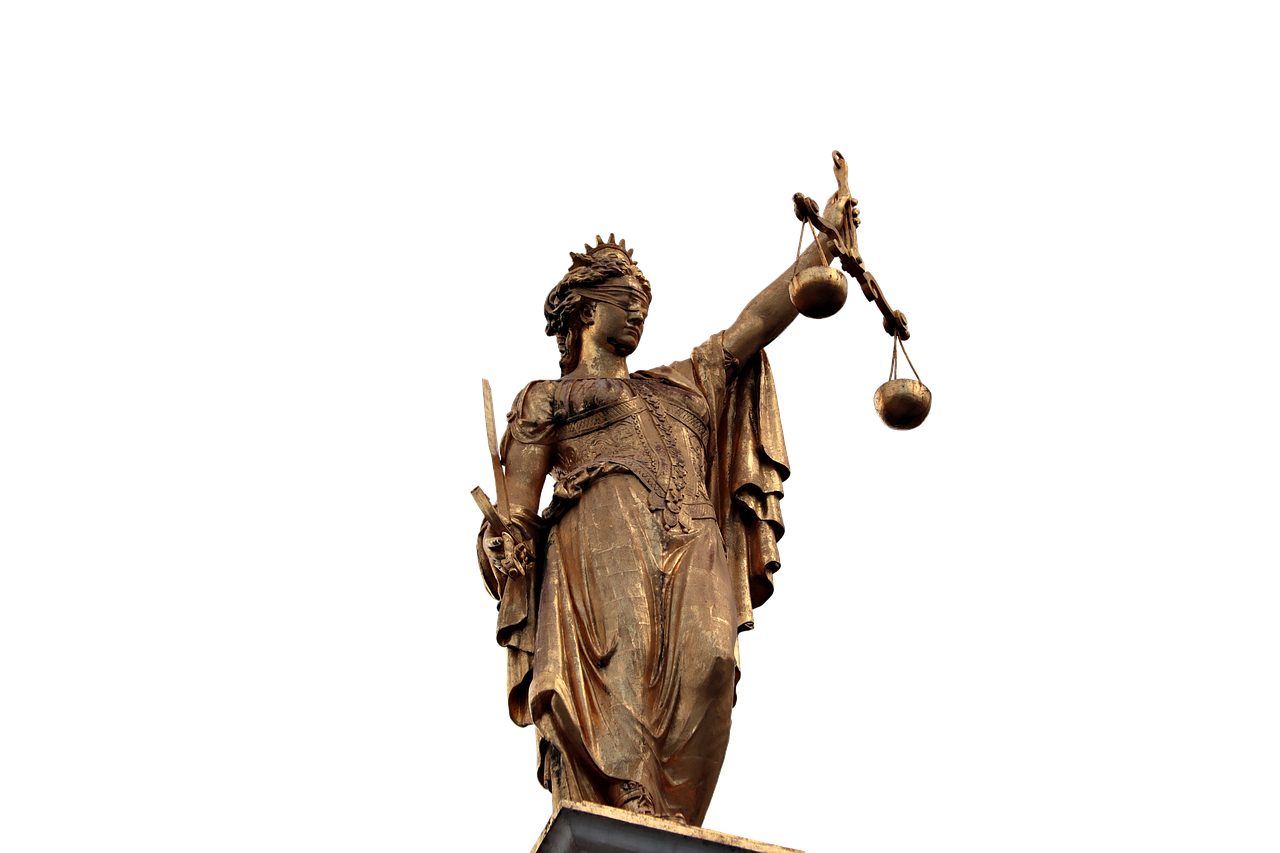
The availability heuristic is a fascinating concept in psychology that significantly influences how we perceive reality. Essentially, it’s a mental shortcut that relies on immediate examples that come to mind when evaluating a situation or making a decision. Imagine you’re trying to assess the risk of flying versus driving. If you recently heard about a plane crash on the news, you might suddenly feel that flying is far more dangerous than it statistically is. This is the availability heuristic at work, where the most recent or vivid memories distort our judgment.
One of the most intriguing aspects of this cognitive bias is how it can shape our understanding of truth. When certain events or information are more readily available in our minds, we tend to overestimate their frequency or significance. For instance, if you frequently see news reports about violent crimes, you might start to believe that crime rates are rising, even if statistics show they are actually declining. This discrepancy between perception and reality can create a skewed understanding of the world around us.
To illustrate this further, consider a few common scenarios where the availability heuristic tends to play a crucial role:
- Health Risks: People may overestimate the dangers of certain activities, like swimming in the ocean, if they frequently hear about shark attacks, despite the fact that such occurrences are extremely rare.
- Political Opinions: Voters may form opinions based on the most sensational news stories, leading to a distorted view of a candidate's popularity or policies.
- Consumer Behavior: If a product is heavily advertised or frequently discussed on social media, consumers may perceive it as superior to less visible competitors, regardless of actual quality.
This heuristic can also affect how we process information online. In the age of social media, where sensational headlines often dominate our feeds, the availability heuristic can lead to the rapid spread of misinformation. When people see alarming posts frequently, they may assume those events are more common than they really are, which can skew public perception and influence societal attitudes.
Ultimately, the availability heuristic serves as a reminder of the importance of critical thinking. By recognizing that our perceptions are often influenced by what is most readily available in our minds, we can strive to seek out a broader range of information and perspectives. This awareness allows us to challenge our biases and work towards a more accurate understanding of reality.
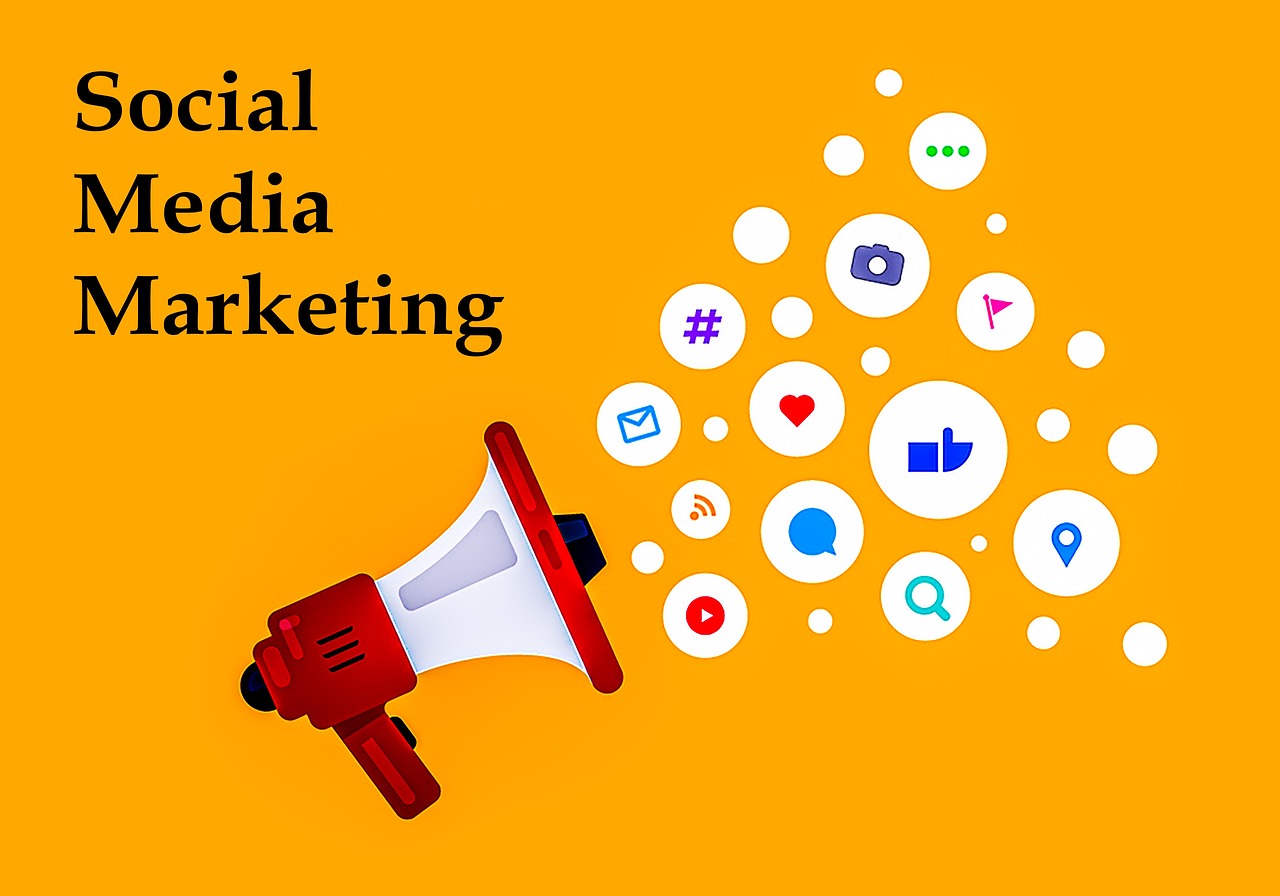
Social influences are like the invisible strings that tug at our perceptions, shaping our understanding of truth and reality in profound ways. Imagine standing in a crowded room, where everyone is discussing a hot topic. The energy in the air is palpable, and suddenly, you find yourself swayed by the opinions of those around you. This phenomenon, known as groupthink, illustrates how our individual beliefs can be overshadowed by the collective mindset of a group. It’s fascinating, isn’t it? The way our thoughts can be molded by the people we interact with, often without us even realizing it.
Moreover, societal norms play a crucial role in this dynamic. From a young age, we are conditioned to adhere to certain beliefs and values that are prevalent in our communities. These norms act as a lens through which we view the world, influencing what we deem acceptable or true. For instance, consider the varying perceptions of climate change across different cultures. In some societies, it is widely accepted as a pressing issue that requires immediate action, while in others, it may be dismissed or downplayed. This disparity highlights how cultural context can significantly shape our understanding of facts.
Additionally, social media has amplified these influences, creating echo chambers where like-minded individuals congregate to reinforce their beliefs. This digital landscape can sometimes distort reality, as algorithms curate content that aligns with our preferences, further entrenching our perspectives. It’s as if we are living in our own little bubbles, where dissenting opinions are rare, and the truth becomes whatever is echoed back to us. This is why it’s essential to be aware of the social influences at play in our lives. By recognizing these factors, we can strive for a more nuanced understanding of truth that transcends the limitations of our immediate social circles.
In conclusion, social influences are a powerful force that shapes our perceptions of truth and reality. By understanding the dynamics of groupthink, societal norms, and the impact of social media, we can navigate the complexities of opinion formation with greater awareness. It’s essential to engage with diverse perspectives and challenge our own beliefs, allowing us to cultivate a more informed and balanced view of the world.
- What is groupthink? Groupthink is a psychological phenomenon where the desire for harmony or conformity in a group results in irrational or dysfunctional decision-making.
- How do societal norms influence our beliefs? Societal norms shape our beliefs by establishing what is considered acceptable or true within a community, often leading individuals to conform to these standards.
- What role does social media play in shaping opinions? Social media can create echo chambers that reinforce existing beliefs, making it challenging for individuals to encounter diverse perspectives and potentially distorting their understanding of reality.
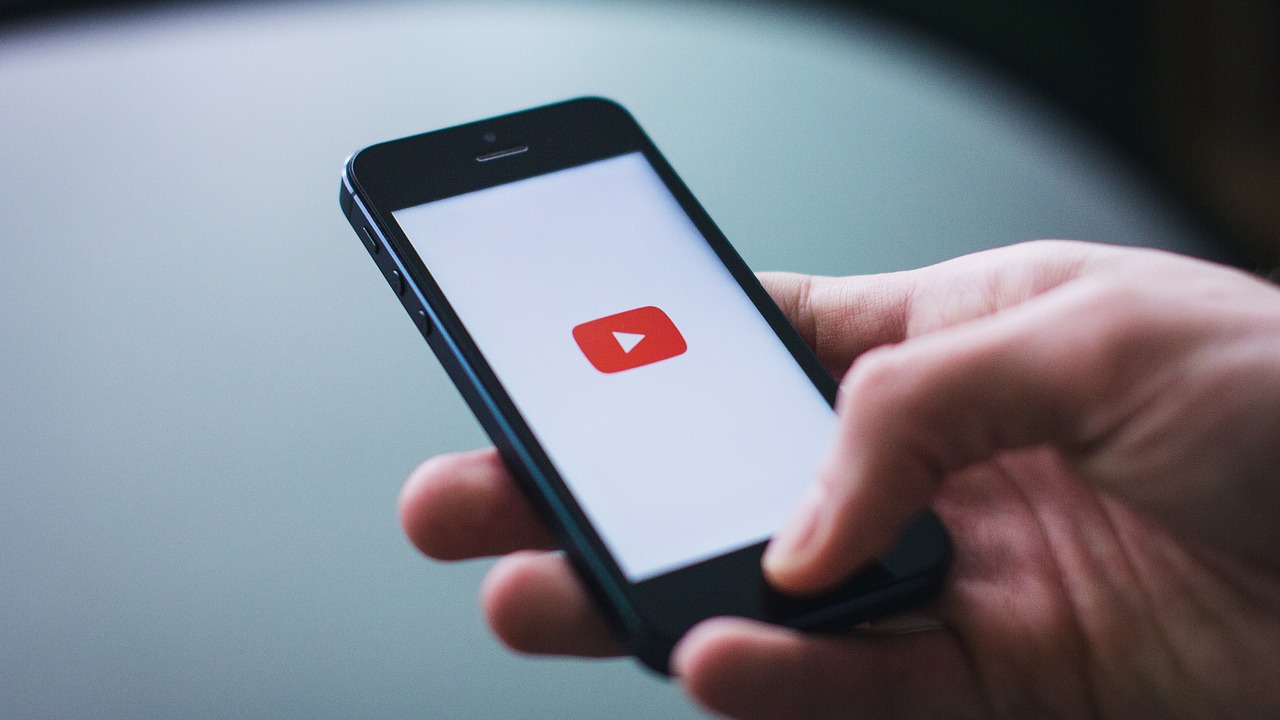
In today's fast-paced world, the media serves as the primary lens through which we view and interpret the world around us. From social media feeds to 24-hour news cycles, the information we consume shapes our understanding of truth and reality. But how does this happen? The influence of media is not just about the stories that are told; it's about how they are told and the context in which they are presented. The media has the power to frame narratives, set agendas, and even sway public opinion, making it a formidable force in shaping societal beliefs.
One significant aspect of media influence is its ability to present information selectively. For instance, consider the way different news outlets report on the same event. Depending on their editorial slant, one outlet might highlight certain facts while downplaying others, leading viewers to form vastly different opinions on the same issue. This selective reporting can create an environment where misinformation thrives, complicating our understanding of what is true and what is not. In a world saturated with information, discerning fact from fiction becomes increasingly challenging.
The rise of digital media has further complicated this landscape. With the advent of social media platforms, anyone can share their opinions and information with a global audience. While this democratization of information can empower individuals, it also opens the floodgates for misinformation and disinformation to spread like wildfire. A single tweet or post can go viral, reaching millions before the truth has a chance to catch up. This rapid dissemination of information often leads to a distorted perception of reality, where sensationalism trumps accuracy.
Moreover, the algorithms that power social media platforms tend to favor content that generates engagement, often prioritizing sensational or controversial topics over factual reporting. This can create echo chambers, where individuals are only exposed to information that reinforces their existing beliefs, further entrenching their opinions. The impact of media is thus a double-edged sword; it can enlighten and inform, but it can also mislead and confuse.
To illustrate the profound impact of media on public perception, consider the following table, which highlights the differences in reporting on a recent event by various news outlets:
| News Outlet | Headline | Main Focus |
|---|---|---|
| Outlet A | "Protests Erupt Over Policy Changes" | Emphasizes public unrest |
| Outlet B | "Government Responds to Citizen Concerns" | Highlights government action |
| Outlet C | "Experts Weigh In on Policy Implications" | Focuses on expert analysis |
As you can see, the same event can be portrayed in multiple ways, leading to different interpretations and opinions among the public. This variability underscores the importance of critical thinking when consuming media. It's essential to question the sources of information and seek out multiple perspectives to arrive at a more balanced understanding of the truth.
Furthermore, the ethical responsibilities of journalists cannot be overstated. In a world where the lines between fact and opinion are increasingly blurred, journalists must adhere to strict standards of accuracy and integrity. Their role is not just to report the news but to ensure that the information presented is factual, fair, and free from bias. This commitment to ethical journalism is vital for maintaining public trust and fostering an informed society.
- How does media influence public opinion? Media influences public opinion by shaping narratives, framing issues, and selectively presenting information, which can lead to varying interpretations of the same events.
- What is the difference between misinformation and disinformation? Misinformation refers to false or misleading information shared without harmful intent, while disinformation is deliberately created to deceive and manipulate.
- Why is critical thinking important when consuming media? Critical thinking helps individuals assess the credibility of sources, recognize biases, and differentiate between fact and opinion, fostering a more informed public.

Misinformation and disinformation are two terms that often get tossed around in discussions about truth and reality, yet they represent different phenomena that can severely impact our understanding of the world. Misinformation refers to false or misleading information shared without malicious intent. For instance, imagine someone sharing a viral post on social media about a health remedy that has no scientific backing. They genuinely believe it works, but in reality, it’s just a myth. On the other hand, disinformation is intentionally deceptive; it’s the deliberate spread of false information with the aim of misleading others. Think of it as a carefully crafted lie designed to manipulate public perception or opinion.
The spread of misinformation and disinformation can occur through various channels, but social media platforms have become the primary breeding ground for both. The rapid sharing capabilities of these platforms mean that false information can travel faster than the truth. A study conducted by the Massachusetts Institute of Technology found that false news stories are 70% more likely to be retweeted than true stories. This is a staggering statistic that highlights how easily we can fall prey to misleading narratives.
One of the most alarming aspects of misinformation and disinformation is their potential to shape public opinion and policy. For example, during the COVID-19 pandemic, various myths about the virus and its treatment spread like wildfire. These myths not only confused the public but also hindered effective responses to the crisis. In fact, misinformation can lead to significant consequences, such as people refusing vaccines or ignoring health guidelines, resulting in increased health risks and fatalities.
To combat misinformation and disinformation, it’s essential to develop critical thinking skills and a healthy skepticism towards the information we consume. Here are a few strategies that can help:
- Verify Sources: Always check the credibility of the source before sharing information. Trusted news outlets and official health organizations are usually reliable.
- Cross-Reference Information: Look for multiple sources reporting the same information. If a claim is true, it will likely be corroborated by various reputable sources.
- Be Aware of Emotional Manipulation: Misinformation often plays on emotions. If a piece of information makes you feel outraged or frightened, take a step back and evaluate its validity.
Ultimately, the battle against misinformation and disinformation requires collective effort. By educating ourselves and others, we can foster a more informed society where truth prevails over deception. Remember, in a world inundated with information, it’s our responsibility to sift through the noise and seek out the truth.
Q1: What is the difference between misinformation and disinformation?
A1: Misinformation is false information shared without malicious intent, while disinformation is deliberately misleading information intended to deceive.
Q2: How can I spot misinformation?
A2: Look for credible sources, cross-reference information, and be cautious of emotionally charged content that may manipulate your feelings.
Q3: Why is misinformation dangerous?
A3: Misinformation can lead to poor decision-making, public panic, and can significantly hinder effective responses to crises, such as health emergencies.

In today's fast-paced world, the role of journalists has never been more critical. They are the gatekeepers of information, tasked with the responsibility of reporting the truth to the public. This duty is not just about relaying facts; it involves a deeper commitment to ethical standards and the pursuit of accuracy. Journalists wield the power to shape narratives, influence public opinion, and even sway the course of events. Given this immense responsibility, one might wonder: how do they ensure that the information they provide is not only accurate but also fair and balanced?
At the heart of journalistic integrity lies a set of ethical guidelines that serve as a compass for reporters. These principles include:
- Truthfulness: Journalists must strive to report the truth, verifying facts through multiple sources before publication.
- Accountability: They should be accountable for their work, willing to correct errors and clarify misunderstandings.
- Independence: Maintaining independence from outside influences is crucial to ensure unbiased reporting.
- Fairness: Journalists should present all sides of a story, giving voice to different perspectives.
Moreover, the rise of digital media has added layers of complexity to the journalist's role. With the internet acting as a double-edged sword, the speed at which information spreads can be both beneficial and detrimental. While it allows for the swift dissemination of news, it also opens the floodgates for misinformation and sensationalism. Journalists must navigate this treacherous landscape, discerning credible sources from unreliable ones. This challenge requires not only a keen eye but also a robust set of skills to evaluate the veracity of information.
Another significant aspect of journalistic responsibility is the impact of their reporting on society. The stories they choose to tell can either reinforce stereotypes or challenge the status quo. For instance, when covering sensitive topics such as race, gender, or politics, journalists must approach these subjects with care and consideration. A single headline can influence public perception and contribute to societal narratives, making it imperative for journalists to exercise caution and empathy in their reporting.
Lastly, the responsibility of journalists extends beyond mere reporting. They have a duty to educate the public about media literacy, helping audiences discern fact from fiction. In an era where misinformation can spread like wildfire, equipping readers with the tools to critically evaluate information is essential. By fostering a more informed and discerning public, journalists can help combat the tide of misinformation that threatens the very fabric of truth in society.
- What is the primary responsibility of journalists? Journalists are primarily responsible for reporting the truth and providing accurate information to the public.
- How do journalists ensure the accuracy of their reports? They verify facts through multiple sources and adhere to ethical guidelines to maintain integrity.
- What role does media literacy play in journalism? Media literacy helps the public critically evaluate information and distinguish credible news from misinformation.
Frequently Asked Questions
- What is the difference between truth and reality?
Truth is often seen as an objective fact, while reality can be subjective, shaped by personal perceptions and experiences. Think of truth as the solid ground beneath your feet, while reality is the landscape around you, which can change based on your viewpoint.
- How do cognitive biases affect our understanding of truth?
Cognitive biases can cloud our judgment and lead us to favor information that aligns with our existing beliefs. For instance, if you believe in a particular political view, you might only seek out news that supports that stance, ignoring contradicting evidence. It's like wearing blinders that limit your vision.
- What role does perception play in shaping opinions?
Perception is crucial because it colors our interpretation of facts. Two people can witness the same event but come away with completely different opinions based on their backgrounds, experiences, and biases. It’s like looking at a painting from different angles; each view tells a different story.
- How does media influence public opinion?
Media acts as a powerful lens through which we view the world. The way news is reported can sway public opinion significantly. In today's digital age, where information spreads rapidly, it's essential to critically evaluate the sources and narratives presented to us.
- What are misinformation and disinformation?
Misinformation refers to false or misleading information shared without harmful intent, while disinformation is deliberately false information intended to deceive. Both can distort public understanding and create confusion, much like a game of telephone where the original message gets twisted along the way.
- Why is the responsibility of journalists important?
Journalists play a pivotal role in shaping narratives and informing the public. Their commitment to accuracy and ethical reporting is vital for maintaining the integrity of truth. When journalists prioritize facts over sensationalism, they help create a well-informed society.




